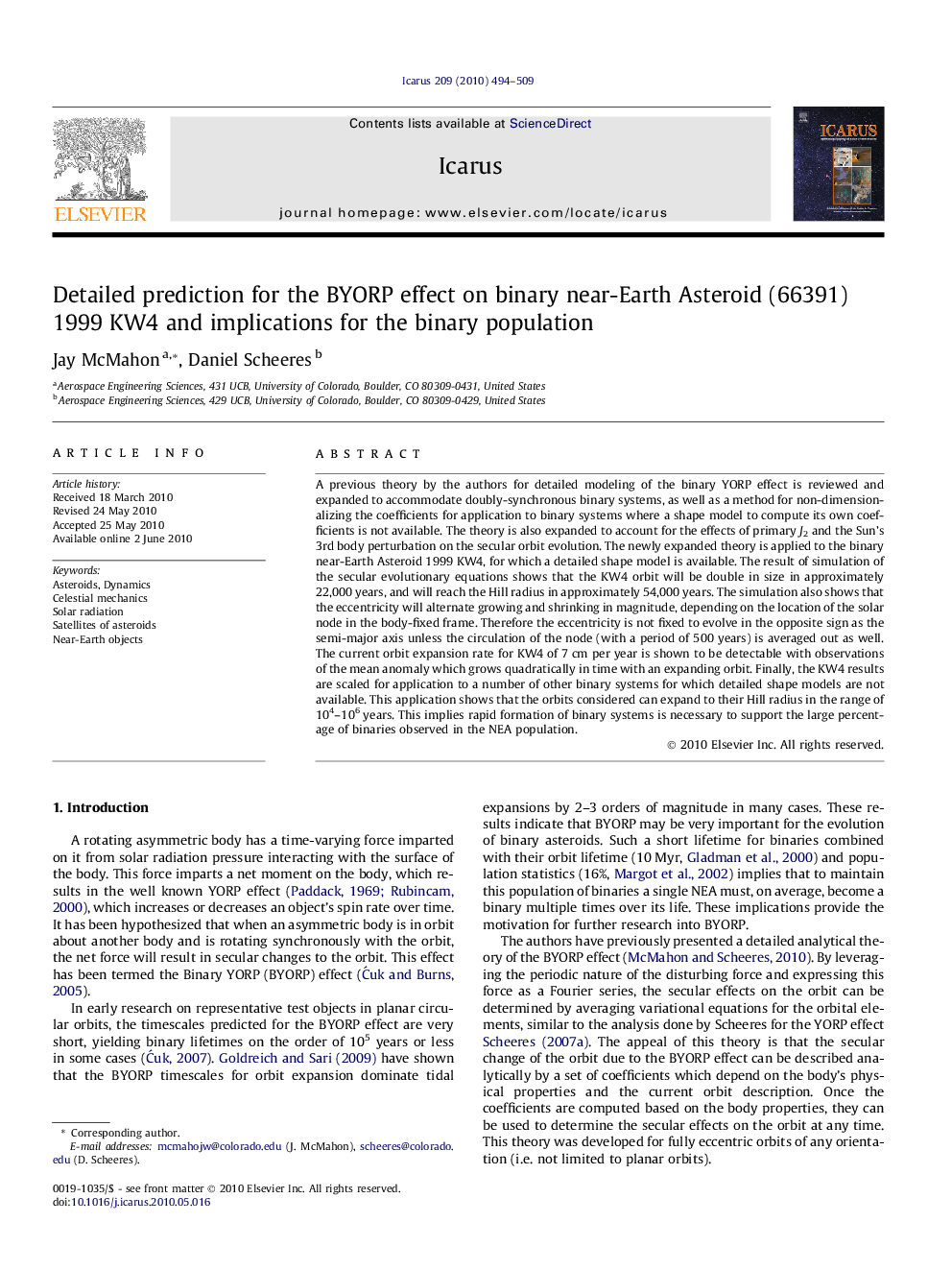| Article ID | Journal | Published Year | Pages | File Type |
|---|---|---|---|---|
| 1774019 | Icarus | 2010 | 16 Pages |
A previous theory by the authors for detailed modeling of the binary YORP effect is reviewed and expanded to accommodate doubly-synchronous binary systems, as well as a method for non-dimensionalizing the coefficients for application to binary systems where a shape model to compute its own coefficients is not available. The theory is also expanded to account for the effects of primary J2 and the Sun’s 3rd body perturbation on the secular orbit evolution. The newly expanded theory is applied to the binary near-Earth Asteroid 1999 KW4, for which a detailed shape model is available. The result of simulation of the secular evolutionary equations shows that the KW4 orbit will be double in size in approximately 22,000 years, and will reach the Hill radius in approximately 54,000 years. The simulation also shows that the eccentricity will alternate growing and shrinking in magnitude, depending on the location of the solar node in the body-fixed frame. Therefore the eccentricity is not fixed to evolve in the opposite sign as the semi-major axis unless the circulation of the node (with a period of 500 years) is averaged out as well. The current orbit expansion rate for KW4 of 7 cm per year is shown to be detectable with observations of the mean anomaly which grows quadratically in time with an expanding orbit. Finally, the KW4 results are scaled for application to a number of other binary systems for which detailed shape models are not available. This application shows that the orbits considered can expand to their Hill radius in the range of 104–106 years. This implies rapid formation of binary systems is necessary to support the large percentage of binaries observed in the NEA population.
